PART 1: Stop Drinking Calories!
THE BIG PICTURE
When we say “body weight” and “weight loss”, we are usually talking about fat mass and decreasing it. Muscle and other tissues make up a lot of our weight also, but few people are trying to “lose muscle mass”! Bodyfat is generally stored when we eat more food than we need, storing extra calories in our fat tissue for the next famine. The problem, of course, is that in modern, Westernized countries, there is no famine. Instead we have near-constant opportunities to feast. In this article series I’ll be laying out some no-nonsense approaches to reducing calories and increasing nutrients in the food we eat. This strategy, along with appropriate exercise habits and other healthy habits, is the key to maintaining a healthy amount of fat in our bodies.
LIQUID CALORIES
Stop drinking calories! Liquid calories tend to increase your total calories (consumed energy) per day, but, because they are mostly nutrient-poor, they decrease your daily nutrient intake. This means a tendency toward fat-gain and decreased health.
Examples of Liquid Calories:
-Juice, even fresh
-Milk, dairy or nondairy
-Alcohol
-Energy Drinks and soda pop, even sugar-free
Replace with:
-Tea, especially green/white/black
-Carbonated Water
-Vegetable Juice, especially that made from green vegetables (carrot juice is still very high in sugar and lower in nutrients than green vegetable juice)
-Whole Food Smoothies, especially those containing both fruits and vegetables
HERE'S WHY
Juice, usually made from fruit or carrots, is essentially sugar water with a small amount of some vitamins. So many nutrients, including fiber, are lost when juicing fruits, that the end product can hardly be considered healthy, even when fresh-squeezed. Eat fruit instead!
Milk is also a low-nutrient food. While most milks (nondairy included) are high in calcium and Vitamin D, these are only two nutrients, and there are thousands of nutrients that we should be getting in our food. Also, milks are somewhat high in sugar, and non-skim dairy milk (along with coconut milk) is high in saturated fat and further increases your calories per day without significantly increasing your nutrients per day.
Alcohol is a low-nutrient food. Some benefits are conferred from moderate alcohol consumption (1-2 drinks per day), but these benefits might be outweighed by simply eating another small salad per day instead of drinking alcohol. If you are physically quite active, 1 alcoholic drink per day is probably fine.
Energy Drinks are not healthy. They are generally made out of carbonated water and sugar with a handful of vitamins and stimulants thrown in. Caffeinating oneself frequently as a lifestyle choice is a questionable practice on its own. But regularly consuming energy drinks is like regularly drinking soda pop, also called liquid candy.
What about sodas and energy drinks that are sugar-free?
Artificial sweeteners are linked to a slight increase in body weight. Why? The prevailing theory is that consuming fake sugar confuses your body’s ability to sense when real sugar is being eaten. That means that when you do eat real sugar, like from some orange slices, your body is less-well equipped to deal with these sugars since it believes they are fake sugars. Personally, I consume drinks with real sugar those few times per year when I splurge on super sweet beverages.
HEALTHY REPLACEMENT DRINKS
Tea, from the tea tree (different than the “tea tree” plant from which “tea tree oil” is obtained), is green, white, or black, depending on how much the leaves are processed after harvest. All three are full of nutrients, free of calories, and will benefit your health. Black has the most caffeine, green the least.
Water and carbonated water is healthy stuff. Drink in abundance! Actually, a sign that you are well-hydrated (but not over-hydrated) is having urine that is slightly yellow, but mostly clear.
 Vegetable Juice, especially that made from green vegetables, is very good for your health. Low in sugar but very high in nutrients, green vegetable juice is a great addition for anyone. Watch out for vegetable juice that is based on celery or cucumber, since this is lower in nutrients than juice made primarily from vegetables like romaine, kale, broccoli, and spinach.
Vegetable Juice, especially that made from green vegetables, is very good for your health. Low in sugar but very high in nutrients, green vegetable juice is a great addition for anyone. Watch out for vegetable juice that is based on celery or cucumber, since this is lower in nutrients than juice made primarily from vegetables like romaine, kale, broccoli, and spinach.
Whole Food Smoothies contain all the stuff that the whole food has, it’s just mixed and “pre-chewed” for your enjoyment. As long as you drink them somewhat close to when they are made (try 10-20 minutes), drinking whole food smoothies can be a super healthy way to go. Try mixing fruits and green leaves. You’d be surprised how many leaves (like spinach or romaine) you can add before you taste them. It’s like a fruit salad meets a green salad, and super convenient. You can also add other flavors by throwing in some cinnamon, unprocessed cocoa powder, ginger, etc.
What About Athletes?
Athletes have higher--sometimes much higher--calorie needs, and liquid calories can be a good way to get those additional calories. It’s still smart to get calories from nutrient-dense foods though, since the body needs more nutrients to repair from increased physical activity. I recommend that athletes consume 1 or 2 calorie-dense smoothies per day that include lots of fruits, green leaves, and nut butter, like the one below:
Recovery Smoothie:
2 bananas, 3 cups mixed greens, 1 cup blueberries, lots of cinnamon, whole food hemp protein powder, 3 TBSP peanut butter, water. Blend until smooth. Makes about 4 cups.
Part 2: Eat Salad Every Day
DISCLAIMER: The author is neither a nutritionist nor registered dietician. Information contained herein was gathered from many sources and can be found in the literature of such organizations as the World Health Organization, the American Dietetics Association, the American Council on Exercise, National Institutes of Health, and others. Consult with a physician before making changes to your diet or exercise programs.
For more about the Author, Sebastian Grubb visit: SebastianGrubb.com
 For those of you in the San Francisco Bay Area, you ought to check out WHOLE MOVES! It's new a fitness class for dancers and others with embodied professions and hobbies brought to you by Sebastian Grubb.
For those of you in the San Francisco Bay Area, you ought to check out WHOLE MOVES! It's new a fitness class for dancers and others with embodied professions and hobbies brought to you by Sebastian Grubb.


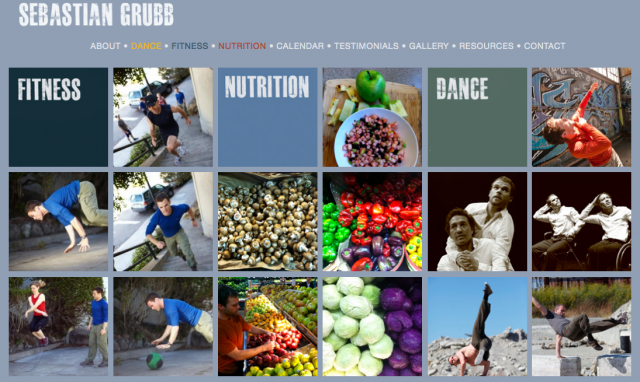




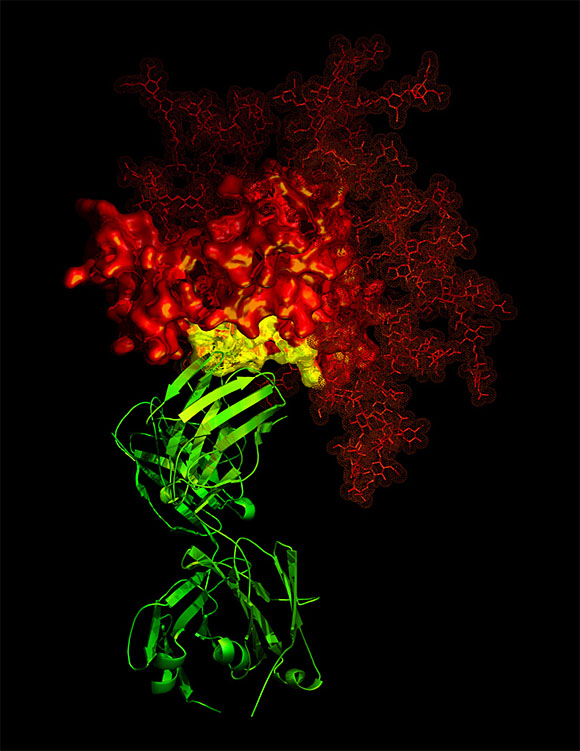
 Using machines to workout has become commonplace in our culture. For many people they are irreplaceable. But let's pause for a moment: is there anything strange about using machinery to train our bodies? Well, it's certainly a good way to become proficient at using machines! But what about high-dynamic or everyday activities that use our full body in a coordinated way? Workout machines (with a few exceptions) just don't replicate that. And relying on them can actually detrain your nervous system and its ability to coordinate many muscle groups efficiently and effectively. Not only that, but machines do such a great job of creating a stable environment that little-to-no balance is required on your part. And that means you need far fewer muscle groups to accomplish a given task. In the end that means you do less work in a machine-based activity and hence less you get benefit for your muscles and overall fitness.
Many such machines were developed in the 20th century and are a mainstay for physical therapy and helping patients recover from injuries. For these patients, having a more stable environment is often necessary because of a previous injury and the need to isolate a specific muscle or muscle group. But for the rest of us what we need is actually a less stable environment and less isolation! (Not to mention that many people recovering from injuries can benefit from stability training too.) I see the popularity of workout machines being due to a few things: increased comfort from an indoor workout environment; sense of satisfaction in knowing that you are working a single muscle and what that muscle is; sedentary workouts - most machines require that you sit down to use them; and simplicity of participation, e.g. press a button or move a weight pin and adjust seat height, then begin. Simplicity is good, but maybe we would benefit from taking some time to learn more complex, non-machine-based movements. In fact, I wholeheartedly believe that traditional exercises without machines are better for you and more worth your time. And in the end, what is so complicated about a push-up?
Using machines to workout has become commonplace in our culture. For many people they are irreplaceable. But let's pause for a moment: is there anything strange about using machinery to train our bodies? Well, it's certainly a good way to become proficient at using machines! But what about high-dynamic or everyday activities that use our full body in a coordinated way? Workout machines (with a few exceptions) just don't replicate that. And relying on them can actually detrain your nervous system and its ability to coordinate many muscle groups efficiently and effectively. Not only that, but machines do such a great job of creating a stable environment that little-to-no balance is required on your part. And that means you need far fewer muscle groups to accomplish a given task. In the end that means you do less work in a machine-based activity and hence less you get benefit for your muscles and overall fitness.
Many such machines were developed in the 20th century and are a mainstay for physical therapy and helping patients recover from injuries. For these patients, having a more stable environment is often necessary because of a previous injury and the need to isolate a specific muscle or muscle group. But for the rest of us what we need is actually a less stable environment and less isolation! (Not to mention that many people recovering from injuries can benefit from stability training too.) I see the popularity of workout machines being due to a few things: increased comfort from an indoor workout environment; sense of satisfaction in knowing that you are working a single muscle and what that muscle is; sedentary workouts - most machines require that you sit down to use them; and simplicity of participation, e.g. press a button or move a weight pin and adjust seat height, then begin. Simplicity is good, but maybe we would benefit from taking some time to learn more complex, non-machine-based movements. In fact, I wholeheartedly believe that traditional exercises without machines are better for you and more worth your time. And in the end, what is so complicated about a push-up? VITAMIN D DETAILS
VITAMIN D DETAILS  The less one exercises, the more one is likely to develop weak bones. This is especially true for women because of their particular hormone levels and patterns. Bones that weaken tend to do so as one ages. However, this may not be due to age itself but rather to the propensity for reduced activity later in life. What kind of exercise is best? Weight-bearing exercise. This category includes those activities that place a stress on bones, which in turn causes a strengthening response in those bones, just like muscles. Examples of such activities are walking, running, dancing, muscular strength-training, and sports based on any of these. Examples of non-weight-bearing activities are swimming and bike-riding, because in these activities one's relation to the ground remains relatively constant and so the bones bear less stress. If the bones are needed less for bearing stress such as one's own weight, they tend to weaken over time, which is why astronauts lose bone mass while in outer space.
The less one exercises, the more one is likely to develop weak bones. This is especially true for women because of their particular hormone levels and patterns. Bones that weaken tend to do so as one ages. However, this may not be due to age itself but rather to the propensity for reduced activity later in life. What kind of exercise is best? Weight-bearing exercise. This category includes those activities that place a stress on bones, which in turn causes a strengthening response in those bones, just like muscles. Examples of such activities are walking, running, dancing, muscular strength-training, and sports based on any of these. Examples of non-weight-bearing activities are swimming and bike-riding, because in these activities one's relation to the ground remains relatively constant and so the bones bear less stress. If the bones are needed less for bearing stress such as one's own weight, they tend to weaken over time, which is why astronauts lose bone mass while in outer space. I first heard about Scott through a friend who basically said, ‘You should work with this guy. He likes using athletic dancers in his pieces.’ At that time I wasn’t living in San Francisco, but I commuted from Santa Cruz every day for a week to take his summer workshop. The workshop was great and afterward I was sure I wanted to work with him. A few months later I moved to San Francisco. We ran into each other again and he invited me to perform in his annual home season. That was three years ago and I’ve been dancing with him ever since.
I first heard about Scott through a friend who basically said, ‘You should work with this guy. He likes using athletic dancers in his pieces.’ At that time I wasn’t living in San Francisco, but I commuted from Santa Cruz every day for a week to take his summer workshop. The workshop was great and afterward I was sure I wanted to work with him. A few months later I moved to San Francisco. We ran into each other again and he invited me to perform in his annual home season. That was three years ago and I’ve been dancing with him ever since.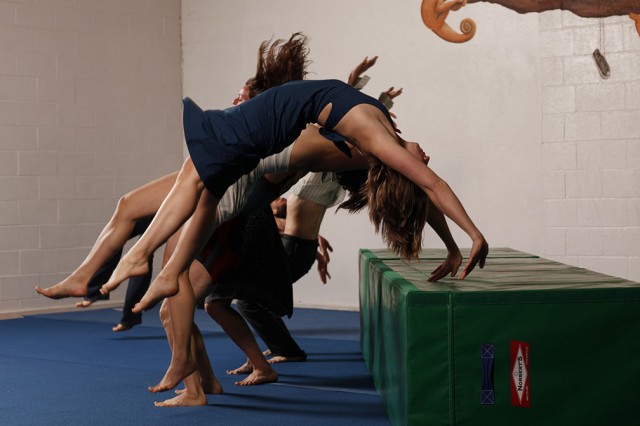 A Walk in the Parkour displays a new hybrid form mixing contemporary dance, contact improv, and parkour. Parkour is an athletic discipline based on efficiently traversing an environment with one’s body. The roots of parkour are in the urban landscape and moving through it with high dynamic. In the past 10 years or so, parkour has gained popularity and become well-known enough to be featured in a number of big budget films. Most cities around the world now have parkour crews practicing together.
A Walk in the Parkour displays a new hybrid form mixing contemporary dance, contact improv, and parkour. Parkour is an athletic discipline based on efficiently traversing an environment with one’s body. The roots of parkour are in the urban landscape and moving through it with high dynamic. In the past 10 years or so, parkour has gained popularity and become well-known enough to be featured in a number of big budget films. Most cities around the world now have parkour crews practicing together.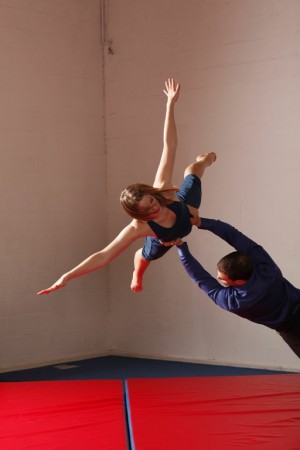
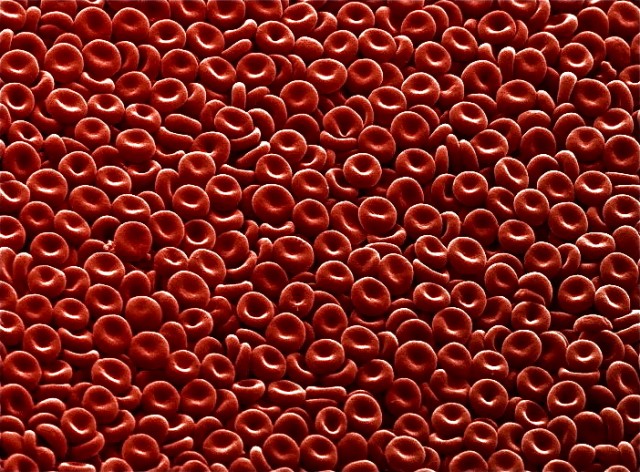 CALCIUM BALANCE: DIETARY INTAKE
CALCIUM BALANCE: DIETARY INTAKE Vitamin D. This is in part because inadequate levels of Vitamin D in the body have recently been linked to higher risk for a host of diseases (including multiple sclerosis, dementia, Alzheimer's, certain cancers, heart disease, and all-cause mortality). It is also because many populations living in wealthy areas such as the EU, UK and U.S. have been seeing a decrease in their bone-strength (e.g. osteoporosis). And it is calcium (with the help of Vitamin D, Magnesium, and other nutrients) that is the primary raw material for making and maintaining strong bones.
Vitamin D. This is in part because inadequate levels of Vitamin D in the body have recently been linked to higher risk for a host of diseases (including multiple sclerosis, dementia, Alzheimer's, certain cancers, heart disease, and all-cause mortality). It is also because many populations living in wealthy areas such as the EU, UK and U.S. have been seeing a decrease in their bone-strength (e.g. osteoporosis). And it is calcium (with the help of Vitamin D, Magnesium, and other nutrients) that is the primary raw material for making and maintaining strong bones. The supplement industry is strong indeed, but few supplements actually confer health benefits. Two of the few that in many cases do are Vitamin D and Vitamin B-12, which I cover below. Nutrients work in relation with each other in order to be utilized within the body. Often nutrients are required in the right proportion in order to provide the necessary ingredients for the well-functioning of the body. The good news is that eating a variety (wider is generally better) of whole foods virtually guarantees that we get enough of what we need. This is because our bodies can, in most cases, selectively absorb varying amounts of different nutrients from the foods we consume. And the spectrum of whole foods available (at least in moderately- and very-wealthy countries) is brimming with a full array of essential nutrients. In short, the best scenario is that we get a lot of nutrients and specifically that we get them from food, not supplements.
The supplement industry is strong indeed, but few supplements actually confer health benefits. Two of the few that in many cases do are Vitamin D and Vitamin B-12, which I cover below. Nutrients work in relation with each other in order to be utilized within the body. Often nutrients are required in the right proportion in order to provide the necessary ingredients for the well-functioning of the body. The good news is that eating a variety (wider is generally better) of whole foods virtually guarantees that we get enough of what we need. This is because our bodies can, in most cases, selectively absorb varying amounts of different nutrients from the foods we consume. And the spectrum of whole foods available (at least in moderately- and very-wealthy countries) is brimming with a full array of essential nutrients. In short, the best scenario is that we get a lot of nutrients and specifically that we get them from food, not supplements.
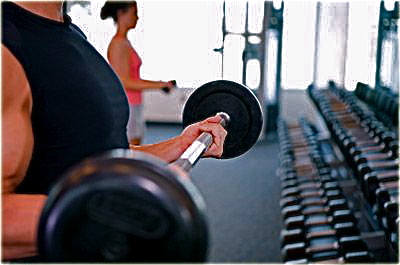 Strength training may be defined as engaging in activities that take increasing muscular strength as their primary focus and benefit. Examples include pull-ups, push-ups, and many acrobatic movements and other specific 'moves' that train many muscle groups at once. Sprinting at top speed is a great way to improve cardiac output (how much blood the heart can put out), and it is also a great way to increase the strength of the major leg muscles.
Strength training may be defined as engaging in activities that take increasing muscular strength as their primary focus and benefit. Examples include pull-ups, push-ups, and many acrobatic movements and other specific 'moves' that train many muscle groups at once. Sprinting at top speed is a great way to improve cardiac output (how much blood the heart can put out), and it is also a great way to increase the strength of the major leg muscles. No multivitamin can take the place of a healthy diet. That's because there are thousands of known and thousands of unidentified nutrients (a large portion are phytochemicals found in plants) in whole foods and no supplement contains these thousands. At best there will be a few dozen, but it is theorized that the real benefits from nutrients depend on how they interact together. And scientists are still guessing at how that happens. The bottom line is: get your vitamins, minerals, and the rest from food, not supplements.
It's important to note that a number of studies have been done on supplemental Vitamin A and Vitamin E. These studies have shown a *decrease* in health associated with supplementing these vitamins. Again, get your vitamins from food.
No multivitamin can take the place of a healthy diet. That's because there are thousands of known and thousands of unidentified nutrients (a large portion are phytochemicals found in plants) in whole foods and no supplement contains these thousands. At best there will be a few dozen, but it is theorized that the real benefits from nutrients depend on how they interact together. And scientists are still guessing at how that happens. The bottom line is: get your vitamins, minerals, and the rest from food, not supplements.
It's important to note that a number of studies have been done on supplemental Vitamin A and Vitamin E. These studies have shown a *decrease* in health associated with supplementing these vitamins. Again, get your vitamins from food.

 Adequate water intake is vitally important. And the more one sweats from being physically active and in hotter environments, the more one ought to drink. Water is a component of many foods and beverages; the healthier of these would be fresh vegetables, fruits, soup made from veggies, and teas. Though it's a point of contention, moderate consumption of coffee and alcohol may also be considered in this group, though these beverages are certainly not necessary for good health. In the end, drinking more pure water is obviously the most reliable way to increase the amount of water your body receives. It is possible to drink too much water, but this is rare. Generally speaking, if your urine is mostly clear or only slightly yellow, you are getting enough water. If it is dark yellow, you are dehydrated and your body is not functioning at its best.
Adequate water intake is vitally important. And the more one sweats from being physically active and in hotter environments, the more one ought to drink. Water is a component of many foods and beverages; the healthier of these would be fresh vegetables, fruits, soup made from veggies, and teas. Though it's a point of contention, moderate consumption of coffee and alcohol may also be considered in this group, though these beverages are certainly not necessary for good health. In the end, drinking more pure water is obviously the most reliable way to increase the amount of water your body receives. It is possible to drink too much water, but this is rare. Generally speaking, if your urine is mostly clear or only slightly yellow, you are getting enough water. If it is dark yellow, you are dehydrated and your body is not functioning at its best.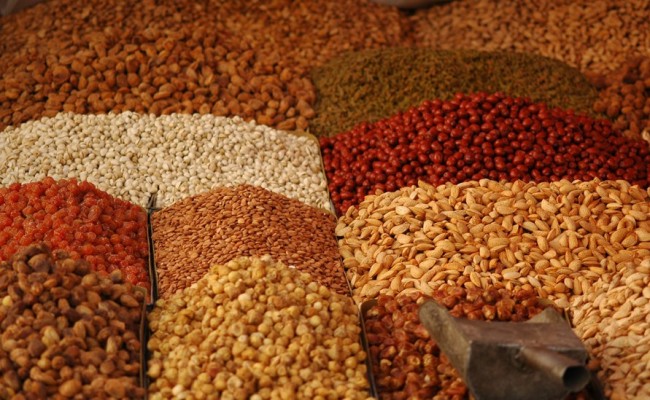 Nuts and seeds contain many beneficial nutrients, including healthy fats that play a role in reducing the risk of heart disease. Regular consumption of nuts and seeds is often quantified at 1-2 servings daily, depending on one's level of physical activity. If you are so physically active that you have a hard time eating enough food, nuts and seeds are an energy-dense (i.e. calorically high) food. A serving is loosely defined as a small handful. Some members of this food group, such as ground flaxseeds, hemp seeds and walnuts, contain a significant amount of omega-3 fatty acids, which are an extremely important -- and an often missing--dietary component. Generally speaking, increasing one's intake of omega-3 fats is a good way to improve one's health.
Nuts and seeds contain many beneficial nutrients, including healthy fats that play a role in reducing the risk of heart disease. Regular consumption of nuts and seeds is often quantified at 1-2 servings daily, depending on one's level of physical activity. If you are so physically active that you have a hard time eating enough food, nuts and seeds are an energy-dense (i.e. calorically high) food. A serving is loosely defined as a small handful. Some members of this food group, such as ground flaxseeds, hemp seeds and walnuts, contain a significant amount of omega-3 fatty acids, which are an extremely important -- and an often missing--dietary component. Generally speaking, increasing one's intake of omega-3 fats is a good way to improve one's health. In general, the more nutrient-dense the food one eats, the healthier one is. Eating more veggies, fruits, and legumes is a direct response to this principle. But since you only have so much room in your stomach, the only (comfortable) way to eat more of these foods is to eat less of other foods that contain fewer nutrients per calorie. On the spectrum of nutrient- density, unrefined plant foods are at the top and processed foods such as pastries, cookies, candy, most food bars and breakfast cereals, bread made with refined (e.g. "white") flour, oil, and others are at the bottom. Higher consumption of processed foods is associated with decreased overall health. This could be due to many reasons, but a likely one is that eating more processed food means eating less unrefined plant food, and it is the latter of the two that can actually protect your health.
In general, the more nutrient-dense the food one eats, the healthier one is. Eating more veggies, fruits, and legumes is a direct response to this principle. But since you only have so much room in your stomach, the only (comfortable) way to eat more of these foods is to eat less of other foods that contain fewer nutrients per calorie. On the spectrum of nutrient- density, unrefined plant foods are at the top and processed foods such as pastries, cookies, candy, most food bars and breakfast cereals, bread made with refined (e.g. "white") flour, oil, and others are at the bottom. Higher consumption of processed foods is associated with decreased overall health. This could be due to many reasons, but a likely one is that eating more processed food means eating less unrefined plant food, and it is the latter of the two that can actually protect your health. Grain
Grain world. This means, per calorie, they pack the highest concentration of vitamins, minerals, phytochemicals, and other health-promoting nutrients when compared to all other foods. This is true of vegetables and fruits that are raw or minimally cooked, and as close to their natural form as possible. (A french fry comes from a potato, but it is not a health-promoting food.) Consuming a higher quantity of nutrients from food (versus from supplementation) is considered one of the most important things you can do to protect and ensure your health. I won't get into detail here, but the science shows many exceptionally high correlations between higher consumption of these foods and increased lifespan.
world. This means, per calorie, they pack the highest concentration of vitamins, minerals, phytochemicals, and other health-promoting nutrients when compared to all other foods. This is true of vegetables and fruits that are raw or minimally cooked, and as close to their natural form as possible. (A french fry comes from a potato, but it is not a health-promoting food.) Consuming a higher quantity of nutrients from food (versus from supplementation) is considered one of the most important things you can do to protect and ensure your health. I won't get into detail here, but the science shows many exceptionally high correlations between higher consumption of these foods and increased lifespan.
 benefits not listed here. But it is also important to mention that, among those populations already consuming high levels of these foods, those who consume more dark leafy greens (e.g. salad) and more legumes/pulses (i.e. beans, peas, and lentils) have even better health and live even longer. (
benefits not listed here. But it is also important to mention that, among those populations already consuming high levels of these foods, those who consume more dark leafy greens (e.g. salad) and more legumes/pulses (i.e. beans, peas, and lentils) have even better health and live even longer. (